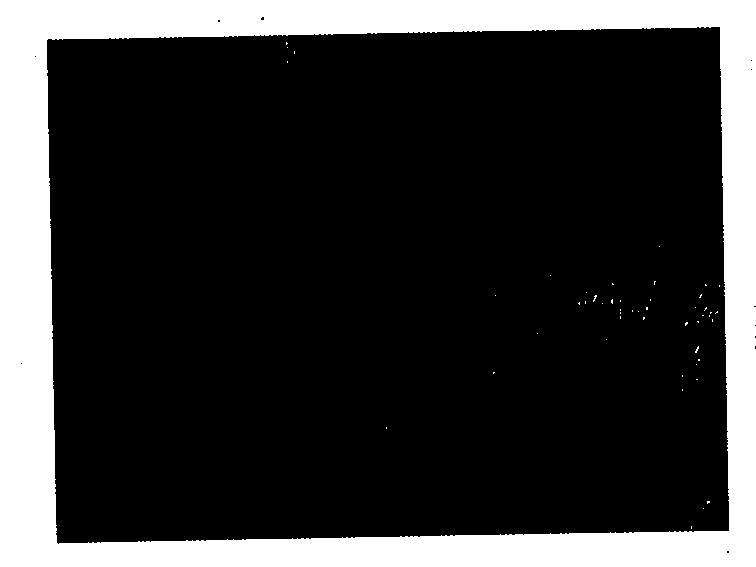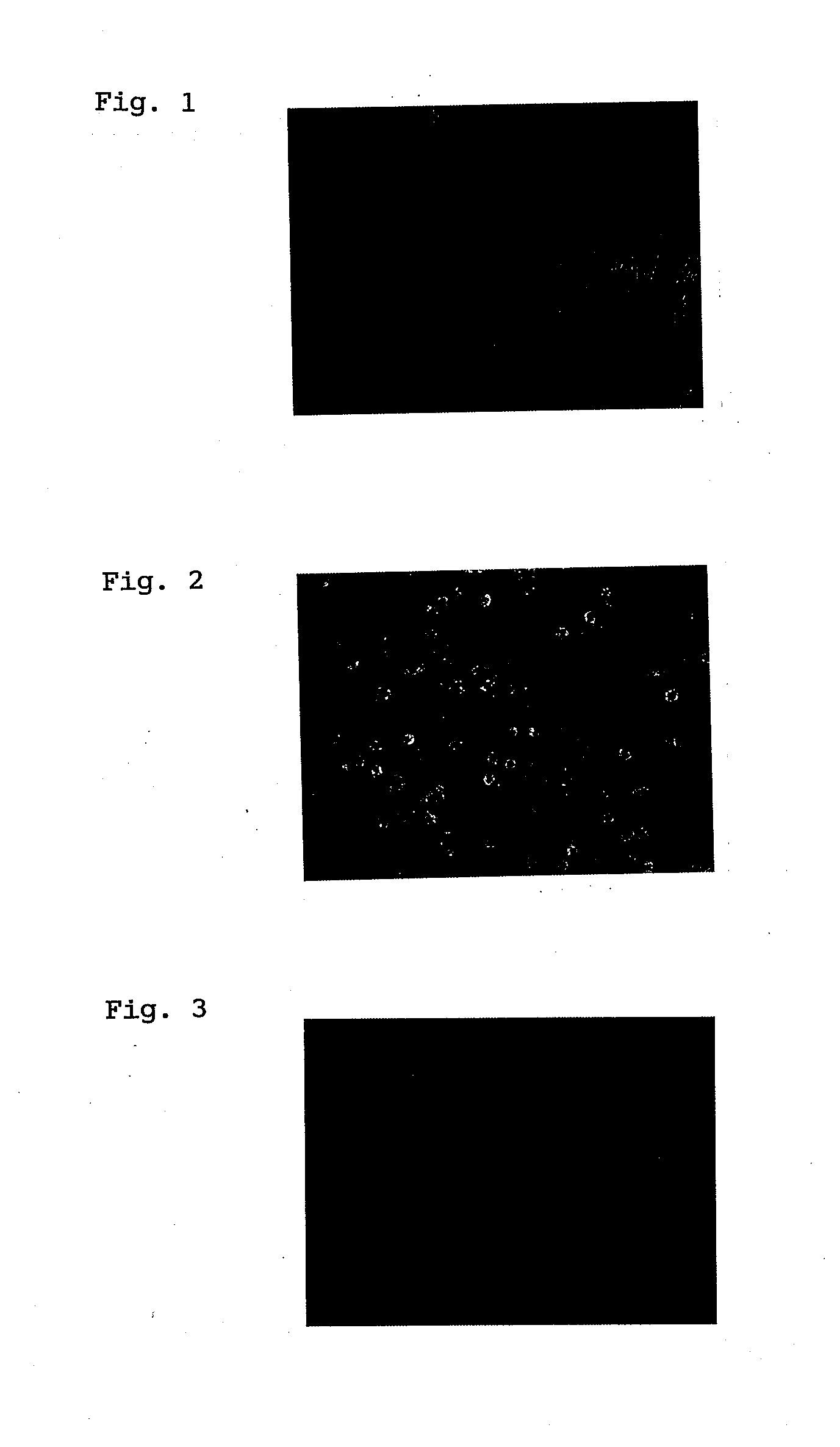Nanoparticles containing water-soluble non-peptide low-molecular weight drug
a low-molecular weight, non-peptide technology, applied in the direction of antibacterial agents, elcosanoid active ingredients, drug compositions, etc., can solve the problems of inability to achieve ideal sustained-release performance and unknown nanoparticles, so as to improve the targeting of water-soluble drugs, reduce the accumulation of drugs, and reduce side effects
- Summary
- Abstract
- Description
- Claims
- Application Information
AI Technical Summary
Benefits of technology
Problems solved by technology
Method used
Image
Examples
example 1
Synthesis of PLA-PEG Block Copolymer
[0065]One gram of PLA (Mn 4900, Wako Pure Chemical Industries Ltd.), 0.831 g of terminal amino-modified PEG (Mp 2000, NOF Corp.), 266 mg of a condensation agent (ethyldimethylaminopropylcarbodiimide hydrochloride, or EDC), and 152 mg of dimethylaminopyridine were dissolved in 20 mL of dimethylformamide (DMF). The solution was stirred at room temperature for 16 hours. Subsequently, the reaction mixture was subjected to dialysis against water at 4° C. for 16 hours (MWCO 10000, SpectraPor7, Funakoshi Corp.), followed by ultrafiltration (YM-50, MWCO 50000, Amicon). The filtrate was freeze-dried to obtain a PLA-PEG block copolymer. The PLA-PEG block copolymer was qualitatively analyzed by gel filtration chromatography (GPC). Using a different PLA (Mn 3600, Wako Pure Chemical Industries Ltd.) and a different terminal amino-modified PEG (Mp 5000, NOF Corp.) at the same molar ratio as the above reaction, a reaction was carried out in the same manner as th...
example 2
Production of PLA-PEG Block Copolymer Nanoparticles Encapsulating a Steroid
[0068]One hundred milligrams of a PLA-PEG block copolymer or 100 mg of a mixture of the PLA-PEG block copolymer and PLA were dissolved in 2 to 6 mL acetone. To this solution, 27 μL (375 mg / mL) of an aqueous solution of betamethasone phosphate was added, immediately followed by 133 μL of a 1M aqueous zinc chloride solution. The mixture was allowed to stand at room temperature for 30 minutes. Using a pipette, the mixture was then added to 40 mL water under stirring. This caused the formation of nanoparticles. To the resulting nanoparticle suspension, 1 mL of a 0.5 M aqueous sodium citrate solution and 100 μL (200 mg / mL) of an aqueous solution of Tween 80 (polyoxyethylene (20) sorbitan monooleate) were added. Subsequently, the nanoparticles were purified from the suspension by ultrafiltration (YM-50, MWCO 50000, Amicon), followed by gel filtration (PD-10, Amersham), followed by filtration through a filter (1.2 μ...
example 3
Cellular Uptake of Nanoparticles
[0074]Ten milligrams of rhodamine, a fluorescent dye, was dissolved in a solution of 100 mg of a PLA-PEG block copolymer in acetone. As in Example 2, nanoparticles encapsulating rhodamine were prepared and purified.
[0075]Macrophage-like RAW cells (mouse leukemic monocytes) were inoculated at 10×104 cells / well and were cultured overnight in a MEM medium containing 10% fetal bovine serum. Subsequently, the nanoparticles encapsulating rhodamine prepared above were added to the medium and the cell culture was incubated for 2 hours at 37° C. The cells were washed with PBS, fixed in 4% formaldehyde and observed with a fluorescent microscope.
[0076]The results are shown in FIGS. 1 through 3. FIG. 1 is a fluorescent micrograph of nanoparticle-free cells. FIG. 2 is a fluorescent micrograph of cells to which the nanoparticles described in Example 2 of International Patent Publication No. WO 2004 / 84871 have been added. FIG. 3 is a fluorescent micrograph of cells ...
PUM
| Property | Measurement | Unit |
|---|---|---|
| diameter | aaaaa | aaaaa |
| diameter | aaaaa | aaaaa |
| particle size | aaaaa | aaaaa |
Abstract
Description
Claims
Application Information
 Login to View More
Login to View More - R&D
- Intellectual Property
- Life Sciences
- Materials
- Tech Scout
- Unparalleled Data Quality
- Higher Quality Content
- 60% Fewer Hallucinations
Browse by: Latest US Patents, China's latest patents, Technical Efficacy Thesaurus, Application Domain, Technology Topic, Popular Technical Reports.
© 2025 PatSnap. All rights reserved.Legal|Privacy policy|Modern Slavery Act Transparency Statement|Sitemap|About US| Contact US: help@patsnap.com


